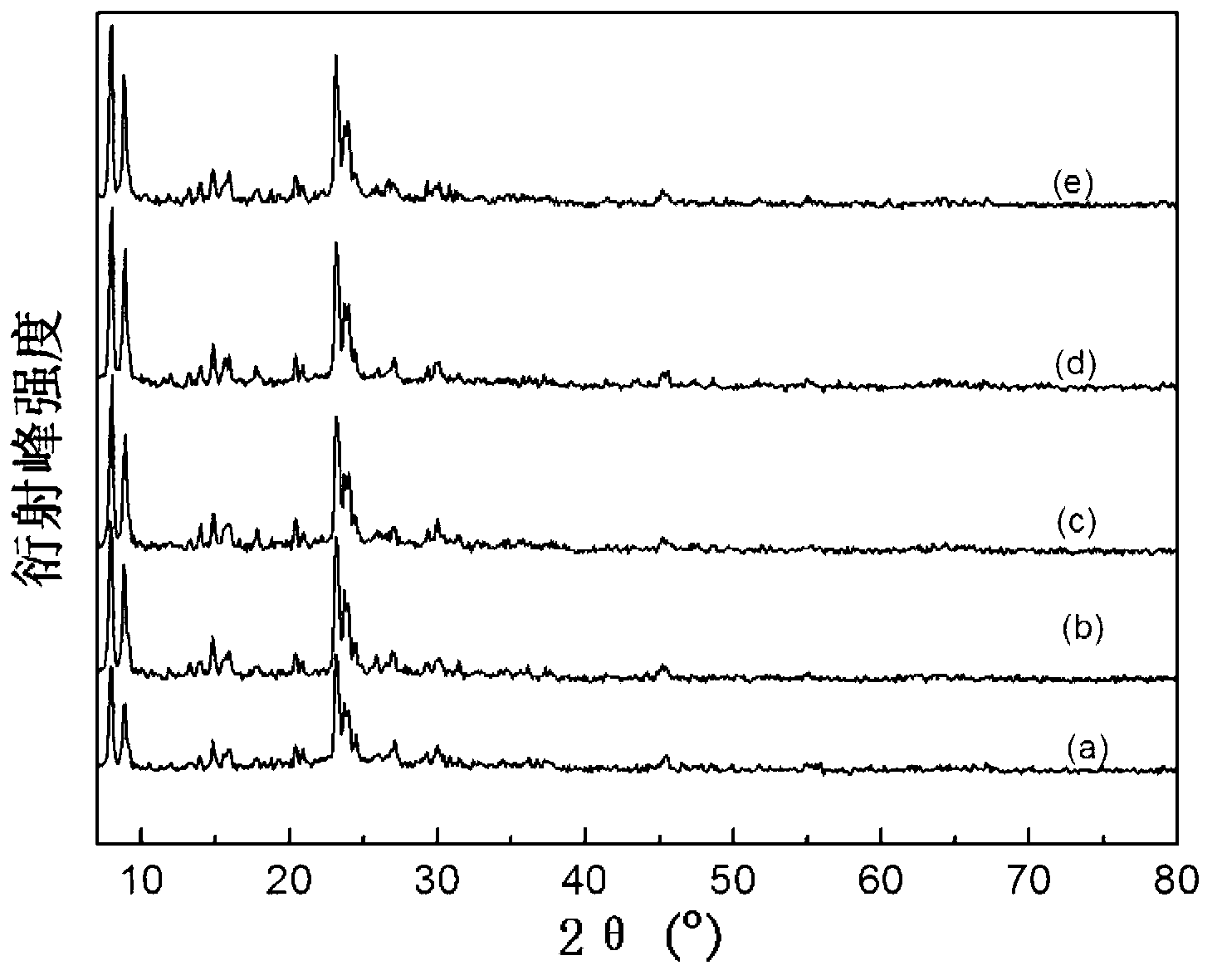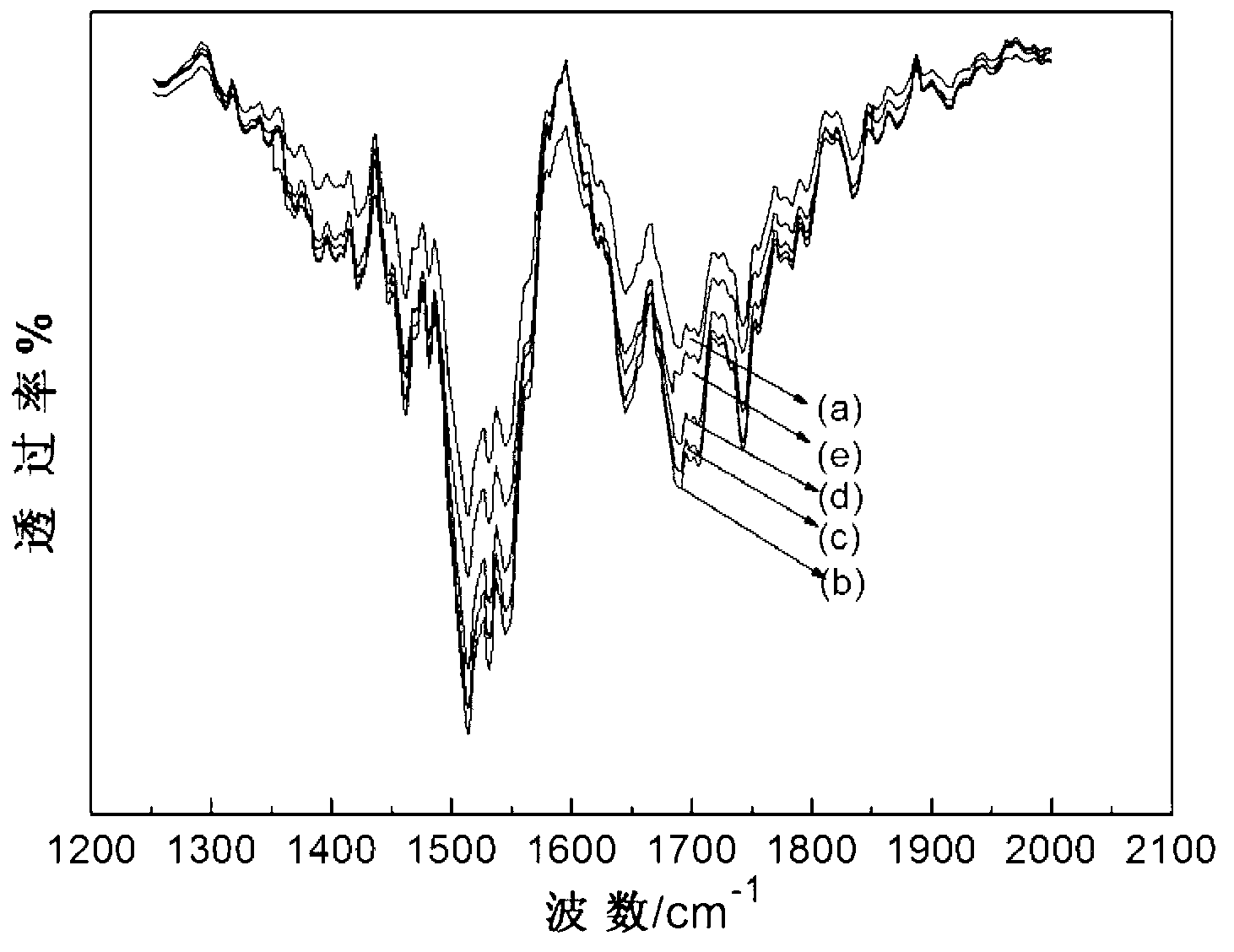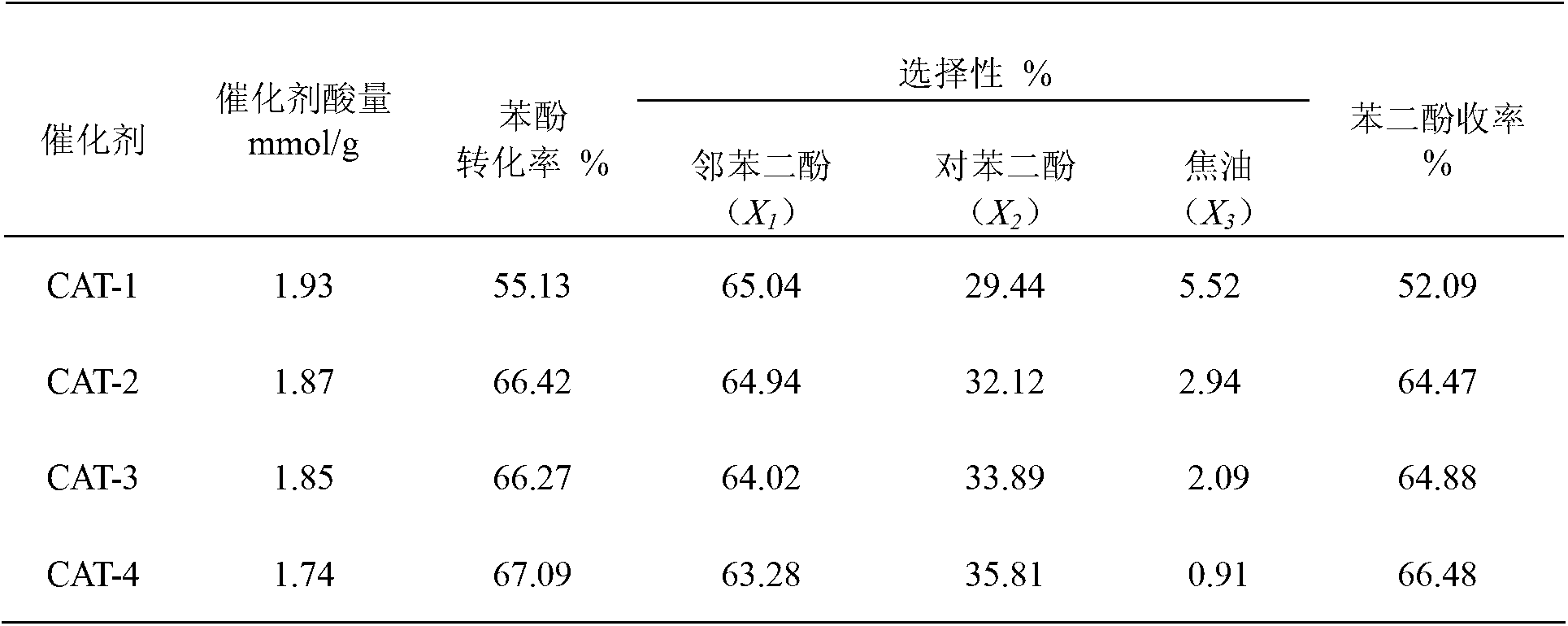Low-capacity solid acid catalyst for hydroxylation of phenol reaction and preparation method thereof
A solid acid catalyst, phenol hydroxylation technology, applied in the preparation of organic compounds, physical/chemical process catalysts, molecular sieve catalysts, etc., can solve the problems of reduced utilization, poor product selectivity, poor phenol selectivity, etc. The effect of multiple, single-pass conversion rate and large pore size of carrier
- Summary
- Abstract
- Description
- Claims
- Application Information
AI Technical Summary
Problems solved by technology
Method used
Image
Examples
Embodiment 1
[0031] Embodiment 1 Catalyst Fe-O / HZSM-5 (50H) preparation
[0032] Accurately weigh 1g of the catalyst carrier HZSM-5 (50H) and transfer it to a suction filter bottle, degas and dehydrate under a vacuum of 650mmHg; at the same time, accurately weigh 0.0345g of ferric nitrate, dissolve it in 4ML of deionized water, and add 1% of the solution volume The surfactant AEO-3 is configured as an impregnating solution, and the impregnating solution is transferred to the funnel integrated with the suction filter bottle. After the catalyst carrier is vacuumed for 1 hour, the funnel switch is turned on, and the prepared impregnating solution is quickly added to the In the carrier, stir the suspension obtained by impregnation for 2 hours, and then shake it in a low-temperature water bath shaker at 40°C until the water is evaporated to dryness and the powder is cracked. Grind the obtained powder, bake it at 110°C for 2 hours, and put it in a muffle Calcined in a furnace at 400°C for 2h to ...
Embodiment 2
[0033] Embodiment 2 Catalyst Fe-Cu-O / HZSM-5 (50H) preparation
[0034] Accurately weigh 1g of the catalyst carrier HZSM-5 (50H) and transfer it to a suction filter bottle, degas and dehydrate under a vacuum of 670mmHg; simultaneously accurately weigh 0.0345g of ferric nitrate and 0.0165g of copper nitrate, dissolve them in 4ML of deionized water, Add surfactant AEO-3 with 1.5% volume of the solution, configure it as an impregnating solution, transfer the impregnating solution to the funnel integrated with the suction filter bottle, and turn on the switch of the funnel after the catalyst carrier is evacuated for 1.5 hours, and the prepared The impregnating liquid is quickly added to the carrier, and the suspension obtained by impregnation is subjected to magnetic force for 2 hours, and then shaken by a low-temperature water bath oscillator at 40°C until the water is evaporated to dryness and the powder is cracked. After baking for 2 hours, put it in a muffle furnace for calcina...
Embodiment 3
[0035] Embodiment 3 Catalyst Fe-Cu-Sn-O / HZSM-5 (50H) preparation
[0036] Accurately weigh 1g of catalyst carrier HZSM-5 (50H) and transfer it to a suction filter bottle, degas and dehydrate under a vacuum of 690mmHg; simultaneously accurately weigh 0.0345g of ferric nitrate, 0.0165g of copper nitrate, 0.0023g of tin protochloride, dissolve To 4ML, PH=4 nitric acid solution, add 2% of the solution volume surfactant AEO-3, configure the impregnation solution, transfer the impregnation solution to the funnel installed with the suction filter bottle, and wait for the catalyst carrier to be evacuated After 2 hours, open the funnel switch, quickly add the prepared impregnating solution into the carrier, stir the suspension obtained by impregnating for 2 hours, and then shake it in a low-temperature water bath oscillator at 40°C until the water is evaporated to dryness and the powder is dry and cracked. The obtained powder was ground, baked at 110°C for 2h, and then calcined in a mu...
PUM
 Login to View More
Login to View More Abstract
Description
Claims
Application Information
 Login to View More
Login to View More - R&D
- Intellectual Property
- Life Sciences
- Materials
- Tech Scout
- Unparalleled Data Quality
- Higher Quality Content
- 60% Fewer Hallucinations
Browse by: Latest US Patents, China's latest patents, Technical Efficacy Thesaurus, Application Domain, Technology Topic, Popular Technical Reports.
© 2025 PatSnap. All rights reserved.Legal|Privacy policy|Modern Slavery Act Transparency Statement|Sitemap|About US| Contact US: help@patsnap.com



